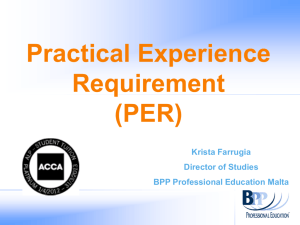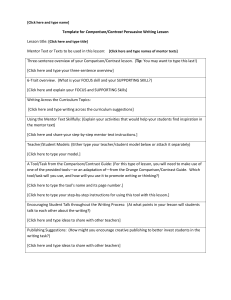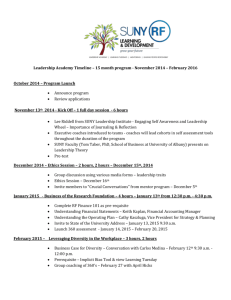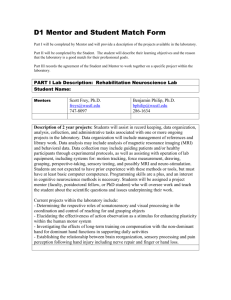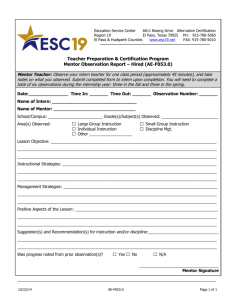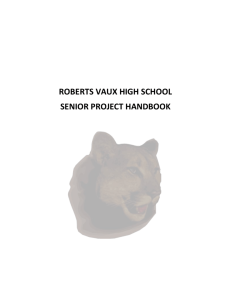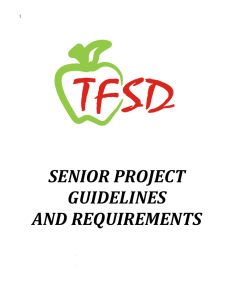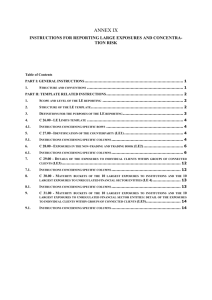Evanoff D1 form
advertisement
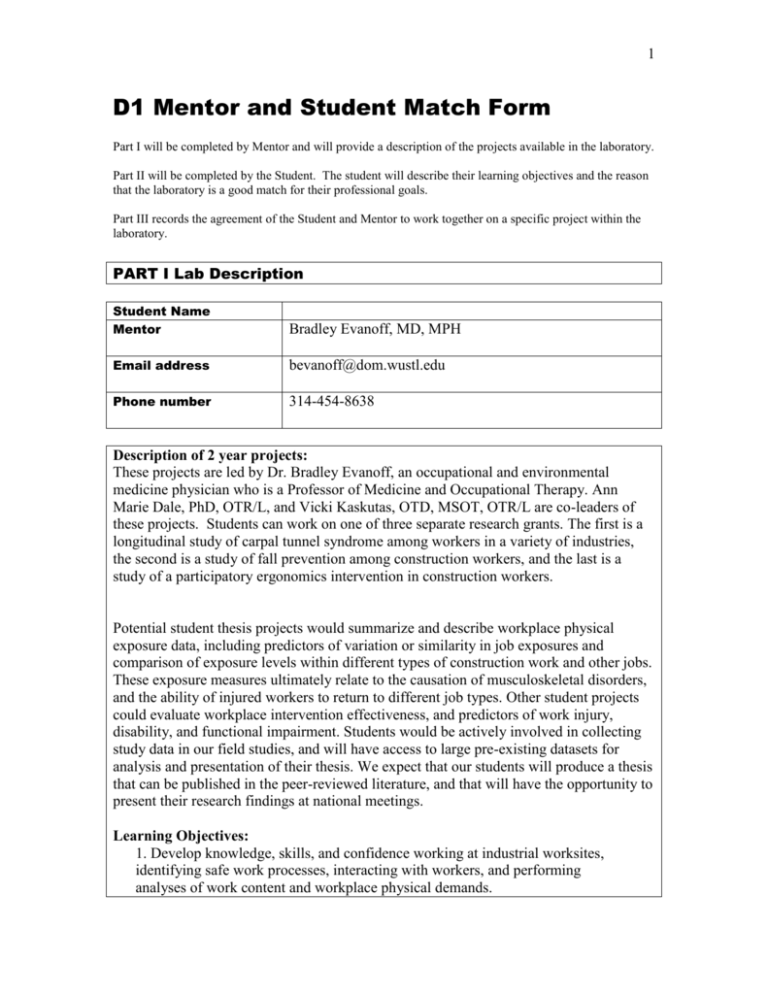
1 D1 Mentor and Student Match Form Part I will be completed by Mentor and will provide a description of the projects available in the laboratory. Part II will be completed by the Student. The student will describe their learning objectives and the reason that the laboratory is a good match for their professional goals. Part III records the agreement of the Student and Mentor to work together on a specific project within the laboratory. PART I Lab Description Student Name Mentor Bradley Evanoff, MD, MPH Email address bevanoff@dom.wustl.edu Phone number 314-454-8638 Description of 2 year projects: These projects are led by Dr. Bradley Evanoff, an occupational and environmental medicine physician who is a Professor of Medicine and Occupational Therapy. Ann Marie Dale, PhD, OTR/L, and Vicki Kaskutas, OTD, MSOT, OTR/L are co-leaders of these projects. Students can work on one of three separate research grants. The first is a longitudinal study of carpal tunnel syndrome among workers in a variety of industries, the second is a study of fall prevention among construction workers, and the last is a study of a participatory ergonomics intervention in construction workers. Potential student thesis projects would summarize and describe workplace physical exposure data, including predictors of variation or similarity in job exposures and comparison of exposure levels within different types of construction work and other jobs. These exposure measures ultimately relate to the causation of musculoskeletal disorders, and the ability of injured workers to return to different job types. Other student projects could evaluate workplace intervention effectiveness, and predictors of work injury, disability, and functional impairment. Students would be actively involved in collecting study data in our field studies, and will have access to large pre-existing datasets for analysis and presentation of their thesis. We expect that our students will produce a thesis that can be published in the peer-reviewed literature, and that will have the opportunity to present their research findings at national meetings. Learning Objectives: 1. Develop knowledge, skills, and confidence working at industrial worksites, identifying safe work processes, interacting with workers, and performing analyses of work content and workplace physical demands. 2 2. Apply theory about biomechanical exposures to the assessment of work demands in a real-world setting and as applied to research. 3. Identify a research question related to the ongoing study and develop knowledge and skills necessary to answer this question over three or more semesters. 4. Assess working adults via physical examination and nerve conduction studies to screen for disorders of the upper extremity. Skills Acquired Through Participation: 1. Develop the ability to perform worksite assessments in a structured fashion that can be communicated to others. 2. Gain familiarity with commonly used ways to assess worksite exposures, and practice exposure assessment in a variety of work settings. 3.Collaborate with workers and other members of the research team, including researchers from a different university. 4. Develop the ability to perform a structured physical examination and basic nerve conduction studies. 5. Perform data entry and data analysis. 6. Develop a research question, complete and present a research project. Expectations (time, lab hours, transportation needs, etc) 1.Attendance at weekly meetings with research advisors and team involved in the project. 2.Four hours per week of research-related work including observations and data entry. Note: personal transportation will be required for this position. 3.Two-three hours per week of independent work on the project. Additional Requirement: An interview is required for this research project. PART II Student Self-evaluation List your learning objectives for working in this laboratory: How will this laboratory experience help you achieve your professional goals? Describe your successful learning style and level of self-directedness: 3 Part III Mentorship Agreement Student Name and Campus Address: Title or Brief description of doctoral project (focus and form of project will be determined after completion of OT5172): Student Signature & Date: Mentor Signature & Date: *Original signatures required

